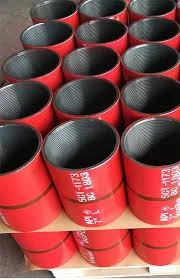- Afrikaans
- Albanian
- Amharic
- Arabic
- Armenian
- Azerbaijani
- Basque
- Belarusian
- Bengali
- Bosnian
- Bulgarian
- Catalan
- Cebuano
- Corsican
- Croatian
- Czech
- Danish
- Dutch
- English
- Esperanto
- Estonian
- Finnish
- French
- Frisian
- Galician
- Georgian
- German
- Greek
- Gujarati
- Haitian Creole
- hausa
- hawaiian
- Hebrew
- Hindi
- Miao
- Hungarian
- Icelandic
- igbo
- Indonesian
- irish
- Italian
- Japanese
- Javanese
- Kannada
- kazakh
- Khmer
- Rwandese
- Korean
- Kurdish
- Kyrgyz
- Lao
- Latin
- Latvian
- Lithuanian
- Luxembourgish
- Macedonian
- Malgashi
- Malay
- Malayalam
- Maltese
- Maori
- Marathi
- Mongolian
- Myanmar
- Nepali
- Norwegian
- Norwegian
- Occitan
- Pashto
- Persian
- Polish
- Portuguese
- Punjabi
- Romanian
- Russian
- Samoan
- Scottish Gaelic
- Serbian
- Sesotho
- Shona
- Sindhi
- Sinhala
- Slovak
- Slovenian
- Somali
- Spanish
- Sundanese
- Swahili
- Swedish
- Tagalog
- Tajik
- Tamil
- Tatar
- Telugu
- Thai
- Turkish
- Turkmen
- Ukrainian
- Urdu
- Uighur
- Uzbek
- Vietnamese
- Welsh
- Bantu
- Yiddish
- Yoruba
- Zulu
what are the differences between casing and tubing?
Differences Between Casing and Tubing in Oil and Gas Production
In the oil and gas industry, both casing and tubing are integral components of well construction and operation. While they serve different purposes, their roles are crucial for ensuring the safety, efficiency, and longevity of oil and gas production. Understanding the differences between casing and tubing is essential for professionals in the field, as well as for those interested in the mechanics of oil extraction.
Definition and Purpose
Casing refers to the series of steel pipes that are installed during the drilling process to stabilize the wellbore, protect the surrounding environment, and isolate different underground formations. Once drilling is completed, casing is cemented in place to provide structural integrity and prevent the walls of the well from collapsing. It also helps to protect the aquifer and other natural resources from contamination by hydrocarbons or other drilling fluids.
On the other hand, tubing is the inner pipe that runs through the casing. Its primary purpose is to transport oil and gas from the reservoir to the surface. Tubing is typically smaller in diameter compared to casing, thus allowing for efficient flow of hydrocarbons. It is also designed for easy removal and replacement, enabling maintenance and repairs without the need to remediate the entire well structure.
Material and Design
Both casing and tubing are usually made from steel, but they can also be constructed from other materials depending on specific environmental conditions and operational requirements. The casing must be robust enough to withstand high pressures and external forces from the surrounding rock formations, which is why it often has thicker walls. Tubing, while still strong, is designed to be more flexible and lightweight to allow for easier handling and transportation of resources.
what are the differences between casing and tubing?

Casing is available in various sizes and types, including structural casing, production casing, and surface casing, each serving distinct roles throughout the drilling process. In contrast, tubing is typically more uniform in size and is generally manufactured to adhere to specific API (American Petroleum Institute) standards, which dictate its dimensions, wall thickness, and material specifications.
Installation Process
The installation of casing occurs immediately after drilling to a specified depth, where the well is lined with casing and cemented into position to secure the wellbore. Once the casing is in place and the cement has set, production operations can begin. The tubing is installed afterward through the casing. This allows for a dual-string well design, where the casing focuses on stabilization and environmental protection, while the tubing is solely dedicated to fluid conveyance.
Maintenance and Lifecycle
Maintenance of casing generally involves inspecting for corrosion, structural integrity, and ensuring that it continues to provide a safe barrier against formation pressures. Tubing, due to its role in transporting fluids, may require more frequent inspections and maintenance, including the replacement of damaged sections or deployment of equipment like downhole pumps and valves.
In conclusion, while casing and tubing may seem similar at first glance, they serve distinct yet complementary functions in the oil and gas industry. Casing provides the necessary support and protection for the wellbore, while tubing facilitates the efficient extraction of hydrocarbons. Understanding these differences is crucial for ensuring safe and effective well operations, thus contributing to the overall success of oil and gas production.
-
Tubing Pup Joints: Essential Components for Oil and Gas OperationsNewsJul.10,2025
-
Pup Joints: Essential Components for Reliable Drilling OperationsNewsJul.10,2025
-
Pipe Couplings: Connecting Your World EfficientlyNewsJul.10,2025
-
Mastering Oilfield Operations with Quality Tubing and CasingNewsJul.10,2025
-
High-Quality Casing Couplings for Every NeedNewsJul.10,2025
-
Boost Your Drilling Efficiency with Premium Crossover Tools & Seating NipplesNewsJul.10,2025







